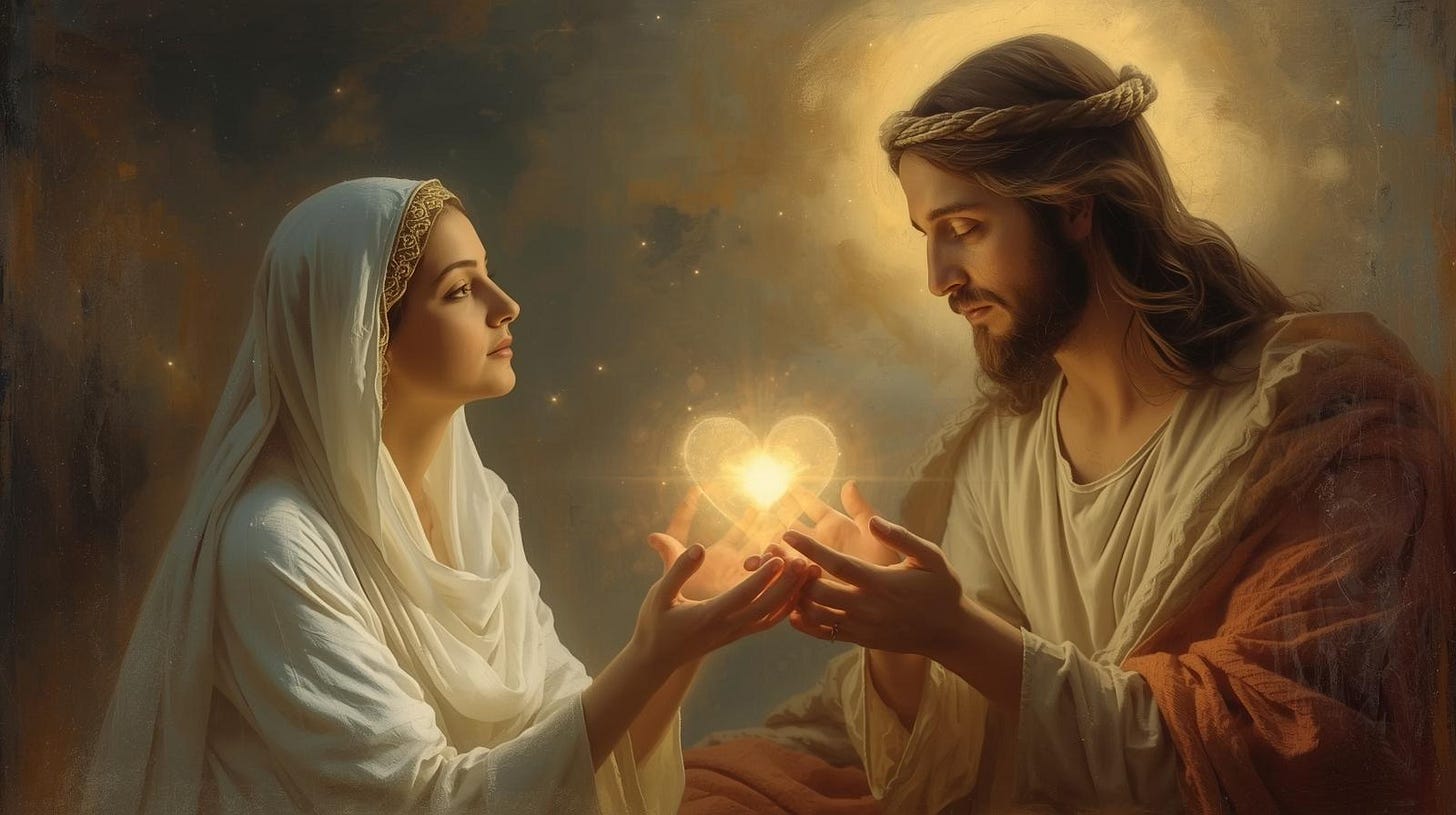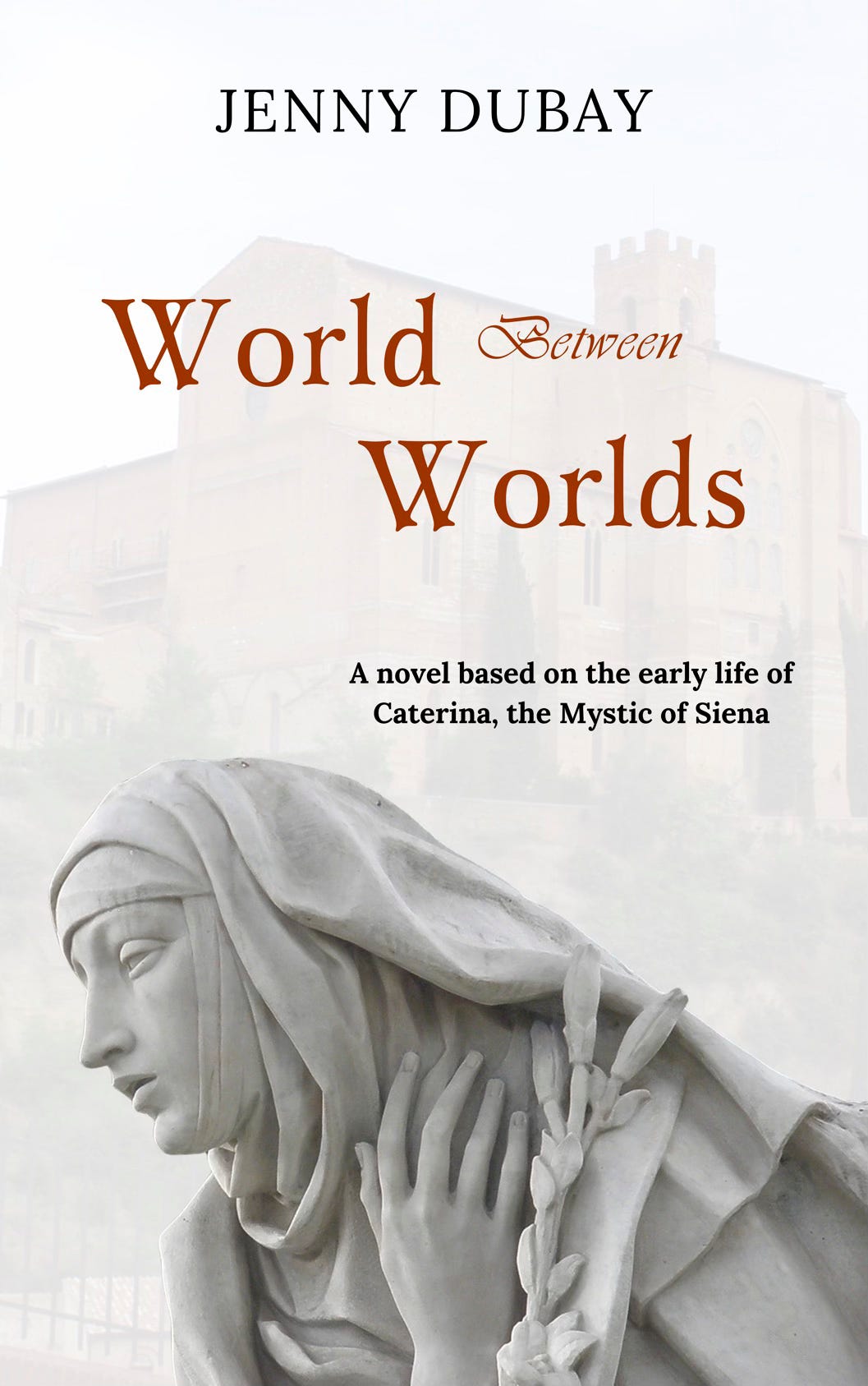The Mystical Heart: Love’s Divine Exchange
"The spirit of life dwells in the most secret chamber of the heart." (Dante, Vita Nova)
During her years of formation, when St. Catherine of Siena was immersing herself in prayer, holy study, and growth in virtue, she experienced a vivid vision in which Christ appeared to her and took out her beating heart. In the words of Raimondo of Capua, Caterina’s primary confessor:
Coming to her in the now accustomed way, [Christ] seemed to open her left side, take out her heart, and carry it away. The vision was so realistic, and so confirmed by the evidence of her own physical condition, that when she went to confession afterwards she told her confessor that she no longer had a heart within her breast. He only laughed at this, and then seriously took her to task for saying such a thing. But she emphatically repeated it, saying ‘It is a fact, Father. As far as I can judge from what I feel in my body, I seem no longer to have any heart in it.’
This tale is a bit odd to our modern mindsets. How can we understand Caterina’s insistence that she lived without a heart for three days before Christ deposited His own heart within the cavity of her chest?
We must understand that medieval people lived in a sacramental worldview in which all things held sublime meanings beyond the obvious. To speak in what sounds like literal terms was the only way Caterina could express the totality of her experience in a supernatural—and superabundant—way.
In medieval theology, the heart was thought to be the literal ‘seat of the soul’; the soul physically dwelled in the heart and in the blood. Christ appearing to Caterina and taking her heart from her body—in answer to her insistent and persistent three-year prayer (‘Create in me a clean heart, O God)—means He completely emptied her soul of all that was not of Him.
Christ allowed Caterina to live in this holy emptiness for three days (comparable to three days in the tomb) in order to complete her purification before He fully entered and possessed her heart, taking it to Himself. During those three days Caterina was in a sort of World Between Worlds (hence the title of my novel based on the life of Caterina). In Il Libro (the Dialogue) she records God the Father describing her experience in this way:
“She does not seem to be in the world, because she is in fact not there; nor does she seem to be in Me, because she has no feeling at all other than that her will does not want to sin.”
(Dialogue 144)
After the three days, Christ again appeared to Caterina in a mystical vision and gave her His heart by filling the empty jug of her own heart with His most holy and precious Blood. Since the soul dwells in the heart and blood, Christ’s soul now inhabited Caterina’s body in not just a spiritual, but in a physical way. That’s why she described this intense mystical union in a seemingly literal manner—it was the only way to even begin reaching the intensity of what happened when she opened herself to fully uniting her free will with Divine Will.
Caterina allowed the soul of Christ to enter and permeate her innermost being, to merge with her soul in a beautiful dance of mystical unity.
Diving deeper into Caterina’s intriguing theology of the heart, in several of her letters she compared the heart to a lamp, based on the parable of the ten virgins in Mathew 25:1-13.
The lamp symbolizes our heart. You can see that a lamp is wide on the top and narrow lower down. This is how your heart is shaped as well, to symbolize that we ought always to keep it wide at the top in affection of Christ crucified.
Our hearts should be expansive, loving Him and holding onto Him with true and holy determination. There you will find the fire of divine charity revealed to you in Christ’s wounds, and His open side will show you the secret of His heart, that what He has given and done for us He has done in simple love. This is where you will find deep and sincere humility, which is the oil that feeds the flame and light in the heart of Christ’s bride.
I said that a lamp is narrow lower down, and so should our heart be. The meaning of this is that our heart ought to be narrow where these earthly things are concerned by not desiring or loving them inordinately. We should not hanker after more than God chooses to give us, but should always be thanking Him, seeing how tenderly He provides for us so we never want for anything.
(Letters T23 and 112)
When the vessel of the heart is totally filled with Christ’s life-giving Blood, it can’t contain itself with such an infusion of intense love. It pours itself out to its neighbors, like rich intoxicating wine. We should all strive to be like the wine vessels of Cana, empty and waiting for the infusion of God’s Love, eager for our meager water to be transformed to the richest wine, desiring to be poured out for the sanctification of others.
Special Offer!
If you’re intrigued by the life of St. Catherine of Siena and want to learn more, my adaptation of her early life (part one of a two book series) is currently on sale when you purchase directly from my website.
Learn more about World Between Worlds: A Novel Based on the Early Life of Caterina, the Mystic of Siena.
You can also purchase on Amazon using my affiliate link.




